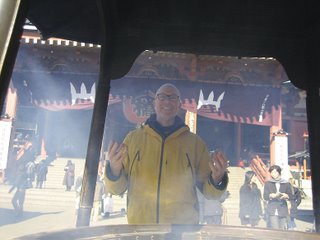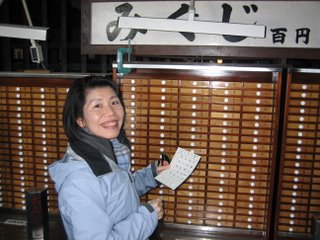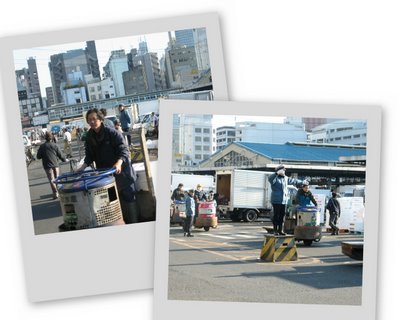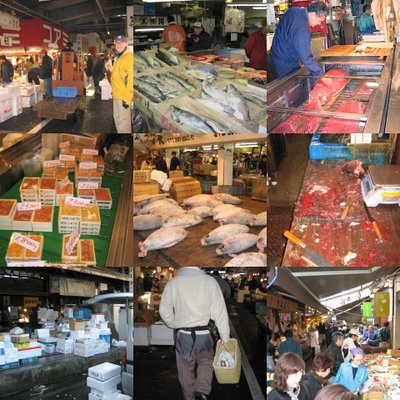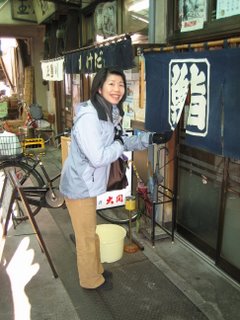
We love going to the market. It is favorite way to begin our exploration of a new place. Seeing what strange and delicious-looking food is available locally can tell you so much about a city's culture and personality. In Kyoto, that place is the well known Nishiki Market, a narrow shopping street, lined by many different shops selling everything from pickles, fried foods, and fish, to meat, tofu, and kitchen items. We had read about knife shop, Aritsugu located in the market, and searched for it because we wanted to update our kitchen knife.
It was almost their 6PM closing time, and we hurriedly ran through the market and with luck, found Aritsugu. No sooner had we set foot in the store, than we saw our friend Harris Salat from NY....a completely random coincidence! Of course, we couldn't believe our eyes. He, however, didn't seem the least bit surprised, as he nonchalantly greeted us with "Hi guys."
 Harris is a food journalist living in NYC. He is not just talented writer, but he is also an interesting human being. He has no fear! He talks to everyone and he loves learning about everything. He has his website, "He ate well". Please check it out!
Harris is a food journalist living in NYC. He is not just talented writer, but he is also an interesting human being. He has no fear! He talks to everyone and he loves learning about everything. He has his website, "He ate well". Please check it out! The next evening, he took us to his favorite izakaya, Rikyu, a casual, small local place with a counter and 10 seats. When you sit down, you look at what is displayed on the counter, choose what looks good, order, and dig in!
The next evening, he took us to his favorite izakaya, Rikyu, a casual, small local place with a counter and 10 seats. When you sit down, you look at what is displayed on the counter, choose what looks good, order, and dig in!Everything we ate tasted delicious. One unusual item we had was Pig Ear. Yes, that's right, a sliced pig's ear! Needless to say, this was our first time for this part of the pork, so we tried it. It had been boiled and then cooked in soup stock....well, let's just say that if you like something that is somewhere between VERY chewy and cartilagenous, this dish is for you....but not for us!
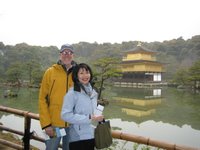


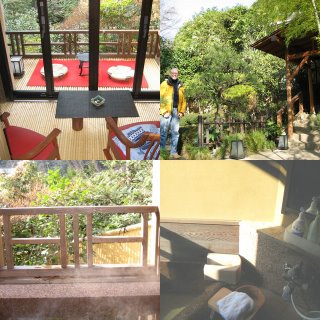

 Meal at the ryokan was a feast consisting of a parade of local delicacies. Our personal room attendant would leave the room and return every tweny minutes or so, each time returning with another dish...it seemed endless! One of the early courses of sashimi even included a live lobster on our plate. The lobster was still moving even though the body had been cut into sashimi!
Meal at the ryokan was a feast consisting of a parade of local delicacies. Our personal room attendant would leave the room and return every tweny minutes or so, each time returning with another dish...it seemed endless! One of the early courses of sashimi even included a live lobster on our plate. The lobster was still moving even though the body had been cut into sashimi!



